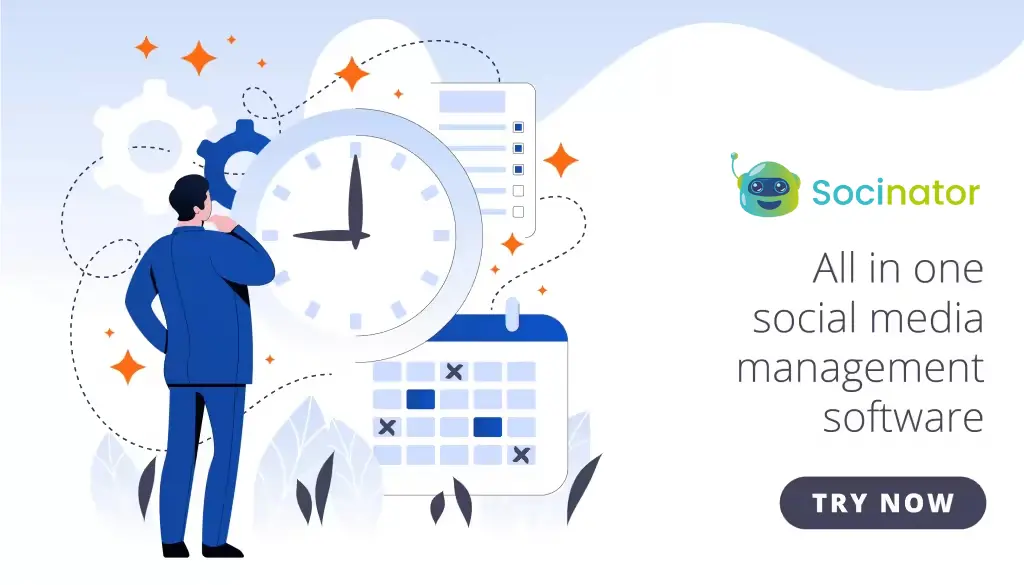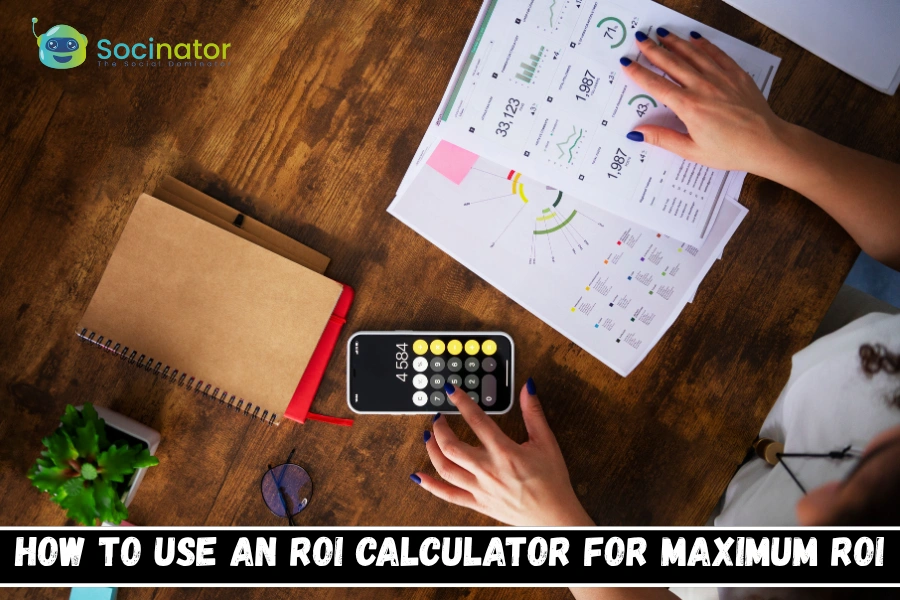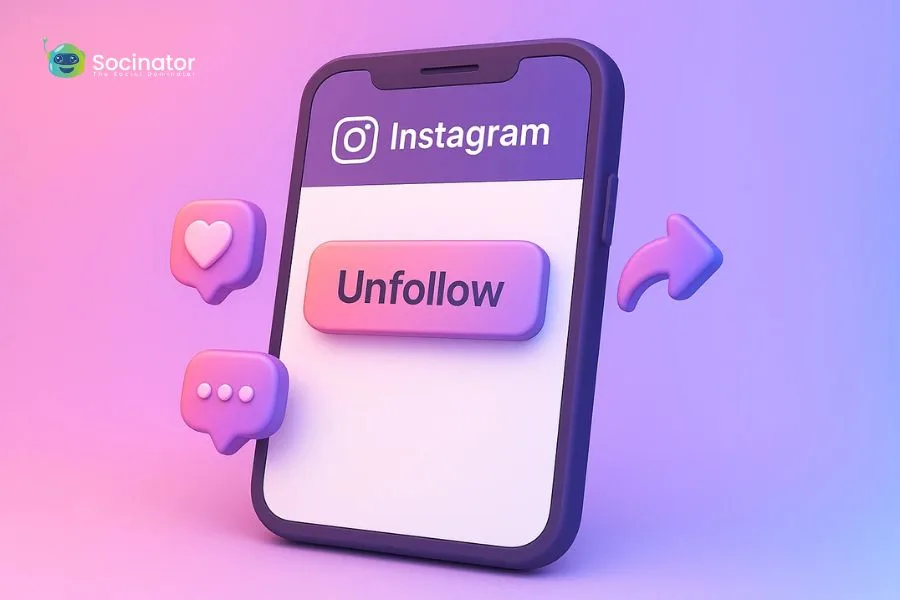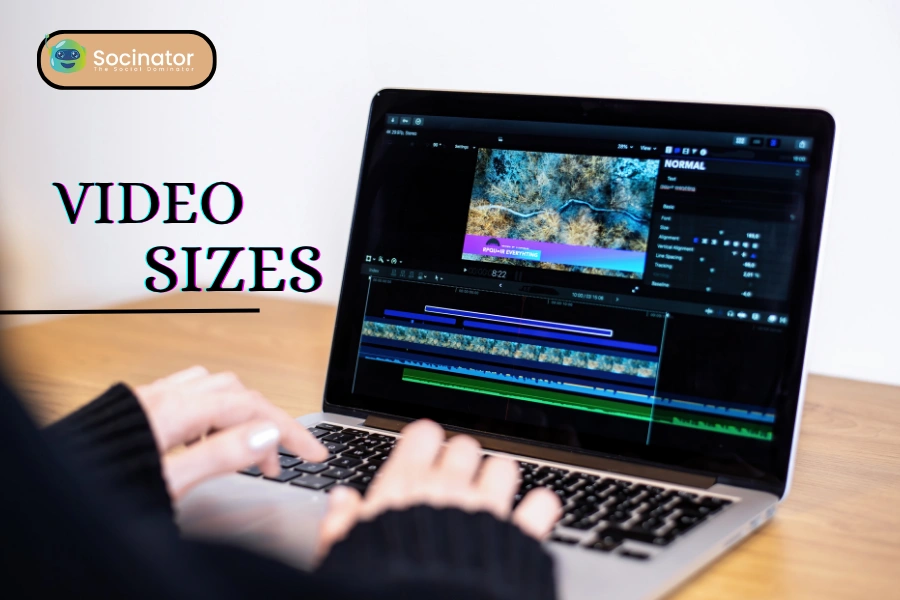We are all aware that Facebook is the largest social media network, with billions of active users worldwide. Especially for brands, creators, and marketers, it provides the best platform for gaining exposure in front of their target audiences. And thereby it brings them more potential leads that can be converted into customers.
However, posting on Facebook without measuring your success is just hard work that may or may not bring you results. Facebook engagement rate is one such factor that decides your marketing success.
Here, in this guide, you will learn about what Facebook engagement is, why it matters more than ever, the factors influencing it, and how you can improve your results with strategic planning.
Listen To The Podcast Now!
What Does Facebook Engagement Mean?
Earlier, when Facebook identified content with higher reach and engagement, it rewarded such content with more exposure. But nowadays, it prioritizes content that has more audience engagement and interactions.
By calculating the Facebook engagement rate, you can determine how frequently people are interacting with your posts. And thereby, you can reach a wider audience and gain new followers or even potential customers.
Engagement includes:
- Likes
- Comments
- Shares
- Saves
- Clicks
- Reactions
- Video watch time
It reflects interest, trust, and emotional connection, the very signals Facebook’s algorithm values.
Why Focus On Engagement Instead Of Reach?
Reach measures how many people saw your content, but views alone don’t guarantee interest or action. The Facebook engagement rate tells you how many of those viewers actually interacted, revealing true audience connection and content effectiveness.
When you track this consistently, you can compare your performance against the average Facebook engagement rate in your industry to understand where you stand.
High engagement boosts:
Organic Reach:
Engaging posts get pushed to more feeds by the algorithm, meaning you can attract a wider audience without spending money on ads.
Visibility:
Comments, shares, and reactions keep your content active longer, ensuring it stays visible at the top of users’ feeds instead of disappearing quickly.
Trust Signals:
When people interact with your posts, it signals authenticity. New viewers are more likely to trust content that already has social proof from others.
Authority in Your Niche:
Consistently engaged posts position your brand as a reliable source of content. Over time, this earns you recognition and respect within your industry.
Real-World Conversions:
Engagement shows people are interested. That interest can turn into sign-ups, website visits, purchases, or brand loyalty much faster than reach alone.
How Does The Algorithm Boost Or Limit Engagement?
Every post you publish goes through Facebook’s internal relevancy test, which determines how many people will see it. The platform analyzes multiple behavioral signals to decide if your content is worth promoting. Here’s what Facebook evaluates:
Watch Time:
How long users stay on your post (especially videos) indicates interest. Longer watch time tells the algorithm your content is valuable and encourages Facebook to show it to more viewers.
Comments and Reply Threads:
Comments show active participation, but reply threads are even stronger signals. When conversations form under your post, the algorithm detects community interest and boosts visibility further.
Share Velocity:
How quickly your content gets shared matters. Fast, early shares suggest trending potential, prompting Facebook to amplify distribution before the content loses relevance.
Hide/Report Frequency:
If users hide your posts or report them as irrelevant, spammy, or annoying, your content score drops. Too many of these actions can lower overall reach and impact future distribution.
Page–User Relationship Strength:
Facebook prioritizes content from pages a user has previously interacted with, likes, saves, clicks, DMs, or frequent visits. Strong relationships equal higher placement in the feed.
Why Engagement Beats Traditional Ads?
People scroll past ads instinctively. Most promotional visuals are ignored unless they trigger an emotional connection or fulfill an immediate need. This is why building a strong Facebook engagement rate is far more effective long-term—because it focuses on genuine interaction rather than short-term impressions.
Engagement builds:
- Community – active conversations create a close-knit space where users feel heard, valued, and involved.
- Credibility – when audiences interact naturally, it signals trust and social proof that money can’t buy.
- Loyalty – consistent engagement nurtures repeated interactions, turning casual viewers into long-term supporters.
- Brand love – emotional experiences lead to organic mentions, recommendations, and repeat visibility.
Unlike traditional ads that stop performing once the budget ends, engagement continues to drive reach, increases algorithmic boosts, and grows brand awareness organically. Users trust authentic interaction more than paid campaigns, making engagement a sustainable competitive advantage.
How To Calculate Engagement ?
Many brands struggle to calculate Facebook engagement rate accurately because different metrics can be used. The engagement rate determines how actively your audience interacts with your content compared to how many people see it.
You can use either of these formulas:
(Total Interactions ÷ Reach) × 100
This formula shows how engaged people are based on how many actually saw your content. It’s ideal for measuring the performance of individual posts.
or
(Total Interactions ÷ Followers) × 100
This shows how engaging your content is compared to your entire audience, regardless of how many viewed the post.
Interactions typically include:
Likes/Reactions
Comments
Shares
Saves
Clicks (for some brands)
Whichever formula you choose, use it consistently. Switching metrics frequently can make your analytics misleading and prevent accurate comparisons over time.
Tracking engagement with the same method helps you identify trends, understand content performance, and make better data-driven decisions.
What Makes An Engagement Score “Good”?
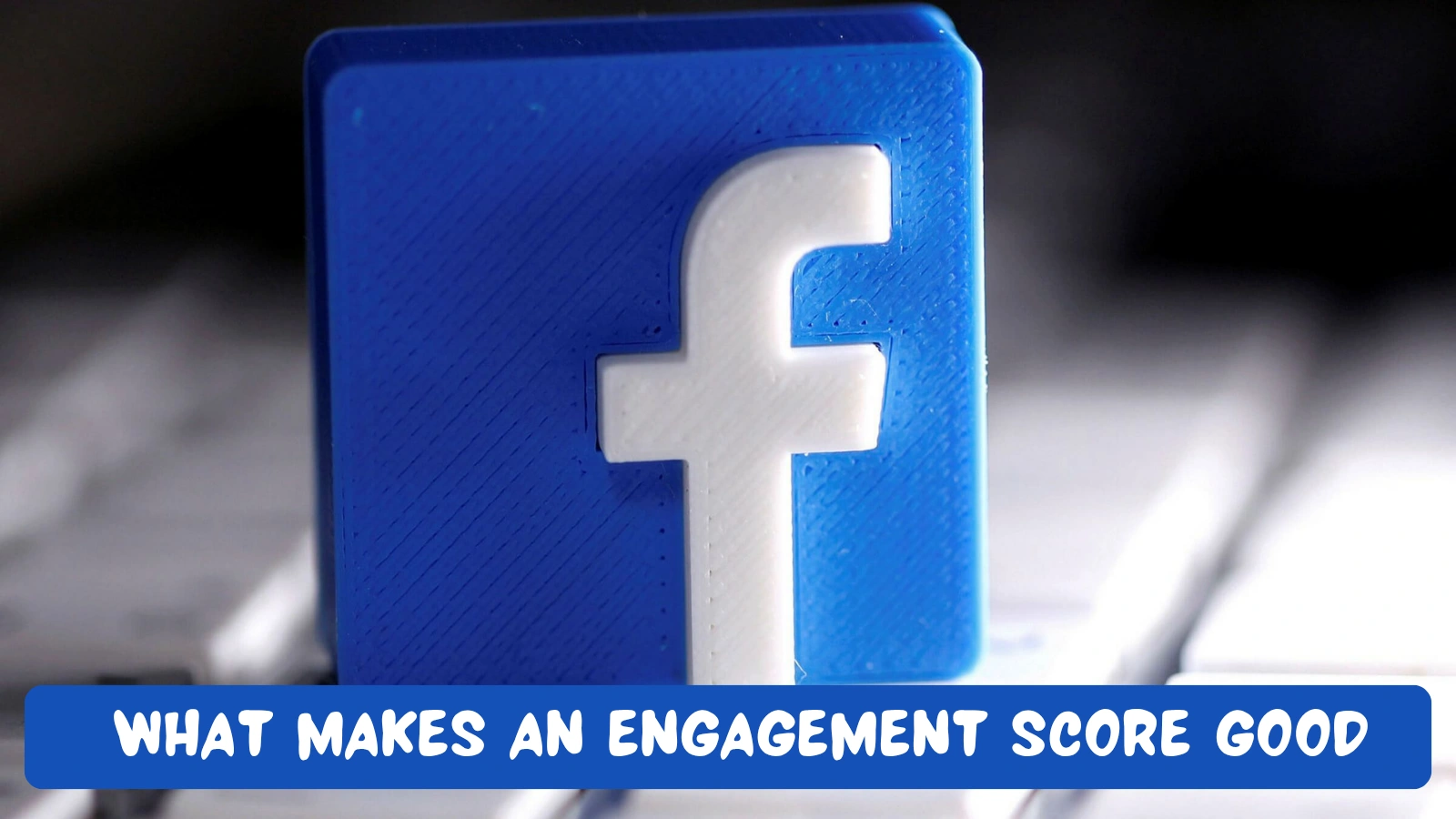 Having a good engagement rate on Facebook shows that users are genuinely responding to posts rather than just scrolling past. Actually, comments and shares are more important than likes, as they show deeper interest and real interaction with your content.
Having a good engagement rate on Facebook shows that users are genuinely responding to posts rather than just scrolling past. Actually, comments and shares are more important than likes, as they show deeper interest and real interaction with your content.
What constitutes a “good” engagement score may also vary based on the business industry, audience size, and content style. Generally, small Facebook business pages get more audience engagement because their communities are more active and focused. And larger pages experience lower engagement due to having wider and less interactive audiences. That’s why it’s crucial to compare results within your own category rather than against big brands.
Also, consider the quality of interactions, not just the quantity. For instance, meaningful comments, conversation threads, and multiple shares send stronger signals to Facebook’s algorithm that your post is valuable.
When your audience engages without paid promotions, it shows trust, loyalty, and relevance, which helps your posts get more visibility and organic reach.
What Common Mistakes Can Hurt Your Engagement?
Many brands:
- Post inconsistently – irregular posting breaks audience interest and reduces algorithm visibility.
- Ignore comment replies – not responding discourages conversations and lowers community trust.
- Sound too corporate – overly formal language feels robotic and pushes users away.
- Avoid video formats – skipping video content misses out on Facebook’s strongest engagement driver.
- Overuse automation – excessive automated posts feel generic and harm authenticity.
- Never experiment – repeating the same content types prevents growth and audience discovery.
These practices suppress your Facebook engagement rate quickly.
Read More!
Social Media Engagement Rate – Ultimate Guide
How To Calculate Engagement Rate For Social Media Growth?
Proven Strategies To Improve Your Facebook Engagement Rate
 Improving your Facebook engagement rate requires strategic content, smart posting habits, audience psychology, and the right tools to scale your efforts. These proven approaches help build a consistent and interactive community around your brand.
Improving your Facebook engagement rate requires strategic content, smart posting habits, audience psychology, and the right tools to scale your efforts. These proven approaches help build a consistent and interactive community around your brand.
1. Quality Over Quantity:
Posting too often doesn’t guarantee better interaction. Instead, focus on meaningful storytelling, cleaner visuals, and relatable topics. When users find value, they react, share, and comment more, improving your Facebook engagement rate naturally.
2. Why Timing Matters:
Not all hours perform equally. Publishing content when your audience is most active drives early reactions, a powerful signal for the algorithm. Test different posting windows and track the spike in your Facebook engagement rate.
3. Comments Beat Likes:
Likes are passive. Comments create conversation threads. Ask open-ended questions like “What’s your opinion?” or “What would you do differently?” More discussion equals a stronger Facebook engagement rate.
4. Power of Storytelling:
Emotionally driven narratives outperform generic branding. Share behind-the-scenes moments, customer transformations, or relatable failures. These human elements deeply strengthen your Facebook engagement rate over time.
5. Video Dominance:
Short videos grab attention faster and keep viewers watching longer. Every second of watch time signals relevance, increasing your visibility and boosting your Facebook engagement rate.
6. Mobile-First Thinking:
Most users browse on mobile. Poor formatting, tiny captions, or cut-off visuals trigger immediate drop-offs. Optimizing layouts protects your Facebook engagement rate from sudden declines caused by user frustration.
7. Automation for Scaling Efforts:
Managing posts manually across multiple schedules is time-consuming. Smart Facebook automation software like Socinator helps schedule content, automate basic interactions, and maintain constant activity
An essential factor for increasing your Facebook engagement rate consistently. By reducing repetitive tasks, brands can focus more on creativity, strategy, and community building.
8. Choosing Efficient Tools:
Professional platforms simplify analytics, scheduling, and trend mapping. Socinator stands out by offering automated audience targeting and performance insights. A dependable Facebook marketing tool helps sustain healthy engagement levels without extra workload.
9. Recycling High-Performing Content:
Don’t let successful posts die. Repurpose them into reels, carousels, or shorter formats. Reintroducing proven ideas expands reach and keeps your Facebook engagement rate consistently improving.
10. Emotional Triggers Matter
Emotion drives interaction. Content that makes users laugh, feel nostalgic, proud, or curious inspires instant reactions, comments, and shares. These emotional sparks raise your Facebook engagement rate effortlessly.
By consistently applying these strategies and leveraging smart automation tools, you can build deeper connections, boost visibility, and steadily grow your Facebook engagement rate in a competitive digital landscape.
Why Should You Choose Socinator For Improving Your Facebook Engagement Rate?
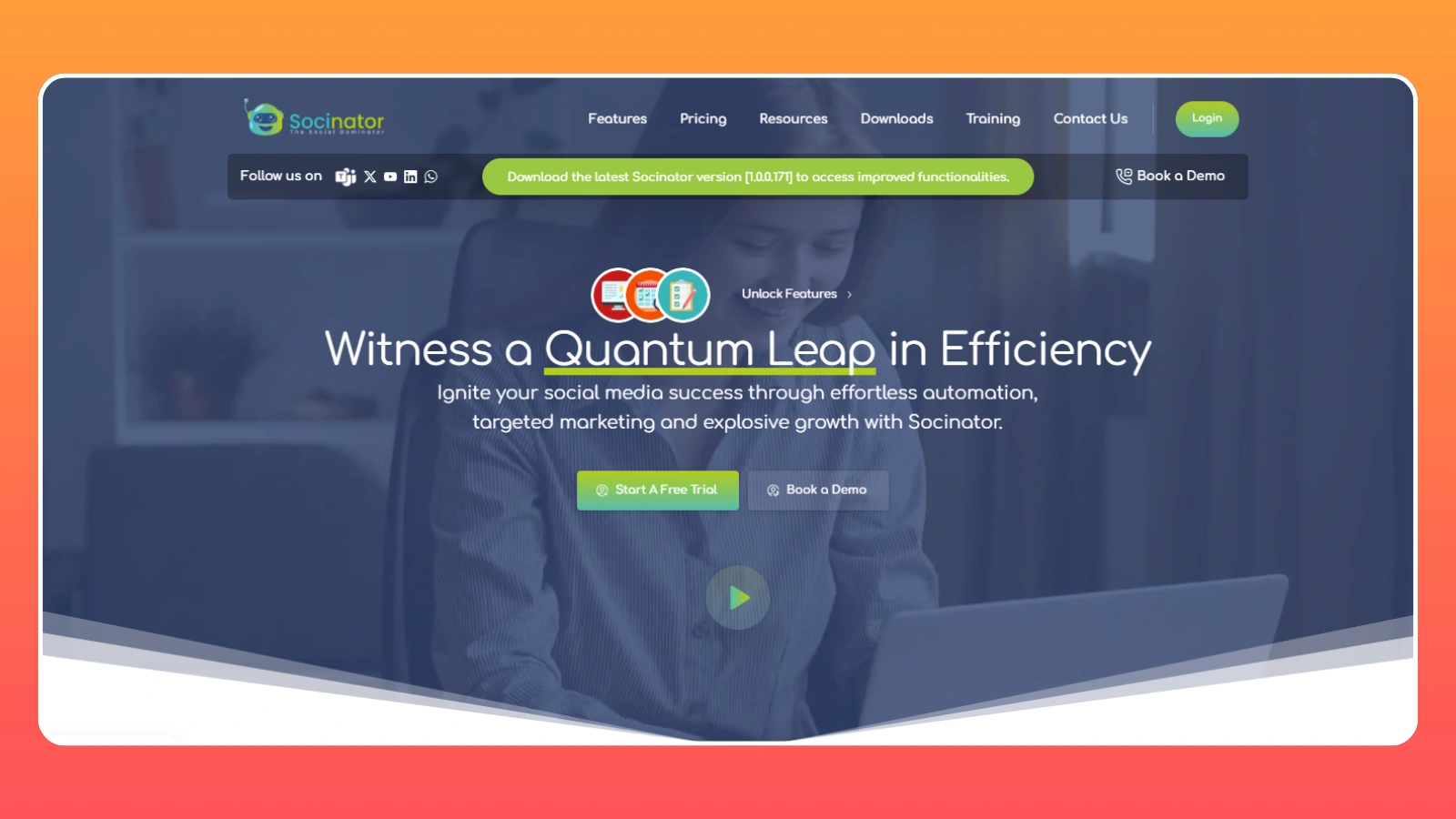 Maintaining healthy engagement requires consistency, timing, planning, and responsiveness. Socinator is built to support all of these with intelligent automation, helping users stay visible even when they’re offline or busy.
Maintaining healthy engagement requires consistency, timing, planning, and responsiveness. Socinator is built to support all of these with intelligent automation, helping users stay visible even when they’re offline or busy.
Why Choose Socinator?
Socinator stands apart with a seamless interface and automation capabilities that streamline your entire social workflow. It supports more than nine social platforms, enabling creators and businesses to manage everything from one dashboard without constantly switching apps.
Its key advantages include:
- Plan, collaborate, and schedule ahead
- Track insights to gauge social performance
- Grow social engagement without pressure
- Build content calendars effortlessly
- Automate posts and save hours weekly
These capabilities directly influence your Facebook engagement rate, keeping interaction steady even during busy periods.
Core Features That Matter
Social Media Scheduling:
Socinator allows you to automate post timing at peak hours, ensuring your content reaches the most active audience segments. Consistent scheduling signals the algorithm positively and improves visibility. This ultimately increases interactions without demanding manual posting.
Content Management:
The tool provides a structured library to store images, videos, captions, and hashtags for organized publishing. With varied and fresh content, you avoid repetition and keep audiences interested. This streamlined content flow helps maintain engagement quality across all posts.
Audience Targeting:
Socinator identifies relevant users based on interests, interactions, and shared behavior patterns. By connecting with the right audience, the chances of comments, likes, and shares increase naturally. Targeted engagement ensures your efforts produce meaningful results.
Analytics and Insights:
Built-in analytics reveal what works and what doesn’t through engagement metrics, growth charts, and performance breakdowns. By studying audience behavior, you can improve content strategy and post timing. These insights are essential for scaling your Facebook engagement rate sustainably.
Automation Tools:
Socinator automates likes, comments, follows/unfollows, and engagement activities with behavior simulation. This keeps your profile active even when you’re not online, maintaining relevance. The automation saves countless manual hours while preserving authenticity.
Account Security:
Using intelligent delays, human-like actions, and gradual interaction patterns, Socinator protects accounts from suspicion or platform violations. These safety layers ensure that automation remains undetected. As a result, users can grow steadily without risking profile restrictions.
By combining automation, analytics, and smart scheduling, Socinator ensures your Facebook engagement rate continues to rise sustainably over time.
Final Thoughts
Facebook’s landscape is evolving rapidly. But one truth remains: engagement drives visibility, trust, community, and revenue. Your Facebook engagement rate reflects how well your audience connects with you. When you combine quality content, consistent posting, emotional storytelling, audience targeting, and smart automation platforms like Socinator, you unlock sustainable growth.
Brands that nurture relationships thrive.
Brands that post without intention fade.
Invest in engagement, and the algorithm will invest in you.
And if you’re ready to scale smarter, Socinator empowers you to automate intelligently, analyze performance, and grow consistently, without burning out.
FAQs
- How often should I post on Facebook to maintain a healthy engagement rate?
The optimal posting frequency is 3 to 5 times a week. If you aren’t able to maintain it, there is quite a chance that people may start losing interest in your Facebook posts. However, even if you are posting regularly but still losing engagement, that means the content quality is not up to the mark. You need to maintain a fine balance between both quality and quantity to maintain a good Facebook engagement rate on your posts. - Do hashtags really help increase Facebook engagement?
Yes, it does, but only when you use them smartly. Facebook’s algorithm prioritizes relevance, so adding 3–5 niche-focused hashtags can improve content discoverability without looking spammy. - Should I create different content styles for different audience segments?
Absolutely. Tailoring messages based on demographics, interests, and behaviors increases relevance, which results in higher reactions, comments, and shares. - Does responding to comments quickly help improve my Facebook engagement rate?
Yes. Faster replies signal active page management, encourage more conversation, and boost visibility in the algorithm. It also builds trust and strengthens community loyalty. 